Physical Address
304 North Cardinal St.
Dorchester Center, MA 02124
Physical Address
304 North Cardinal St.
Dorchester Center, MA 02124
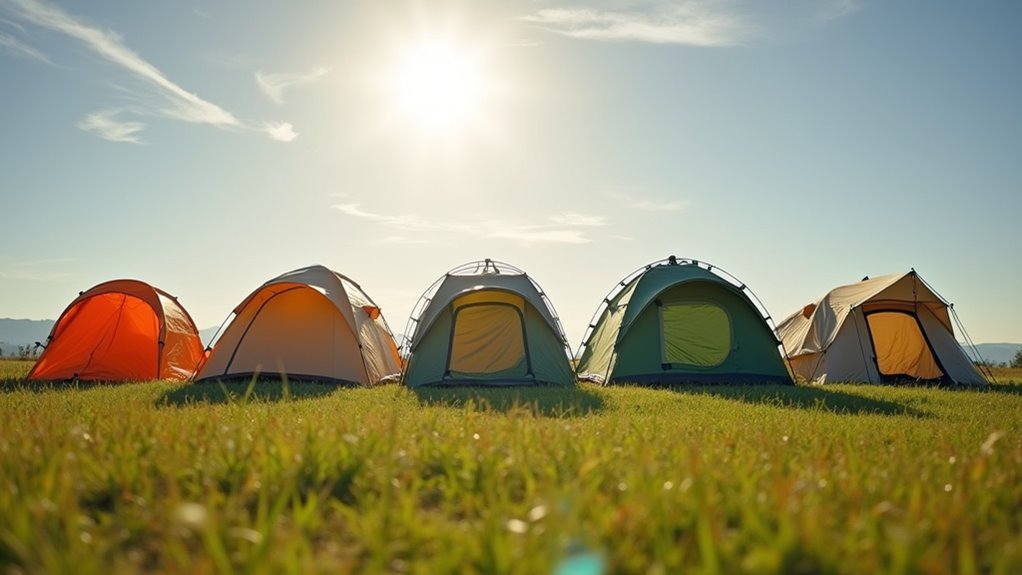
Navigate through dozens of tent options to discover which camping shelter perfectly matches your outdoor adventures and specific needs.
Picture yourself standing in the camping gear aisle, surrounded by dozens of colorful tents that all seem to promise the perfect outdoor experience. You’re probably wondering which one’ll actually keep you dry, comfortable, and within budget during your next adventure. The truth is, there’s no one-size-fits-all solution—your ideal tent depends entirely on how you camp, where you’re going, and what you can’t live without when you’re miles from civilization.
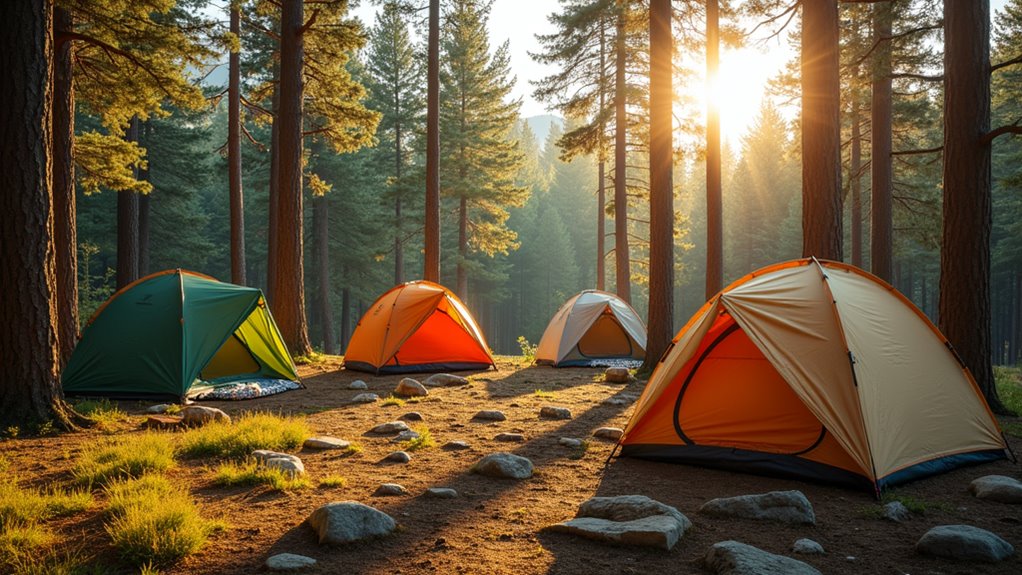
When you’re starting your camping journey or need a reliable shelter that won’t break the bank, dome tents deliver unmatched versatility at an affordable price point. You’ll find these tents excel in moderate weather conditions, offering decent wind resistance thanks to their curved structure.
They’re incredibly user-friendly – most dome tents set up in under fifteen minutes with color-coded poles and clips.
You can choose from two to six-person capacities, making them perfect for solo adventures or family trips. The freestanding design means you won’t always need stakes, though you should secure them in windy conditions.
While they’re not the lightest option for backpacking, dome tents provide excellent value for car camping and weekend getaways.
If you’re planning family camping trips where comfort trumps portability, cabin tents offer the spacious interior you’ve been looking for. These tents feature straight walls and high ceilings, creating room to stand upright and move around freely.
When family comfort matters more than easy transport, cabin tents deliver the roomy space that transforms your camping experience.
You’ll appreciate the multiple rooms that provide privacy for parents and kids. Many cabin tents include built-in storage pockets, gear lofts, and even electrical cord access ports.
The large windows and doors create an airy feel while offering excellent ventilation.
However, cabin tents require more setup time and aren’t ideal for backpacking due to their weight and bulk. They’re perfect for car camping at established campgrounds where you’ll stay multiple nights.
Expect to pay more than basic dome tents, but you’re investing in comfort that makes camping enjoyable for the whole family. Consider setting up your cabin tent near scenic locations like Rattlesnake Canyon in Santa Barbara for an unforgettable family camping experience.
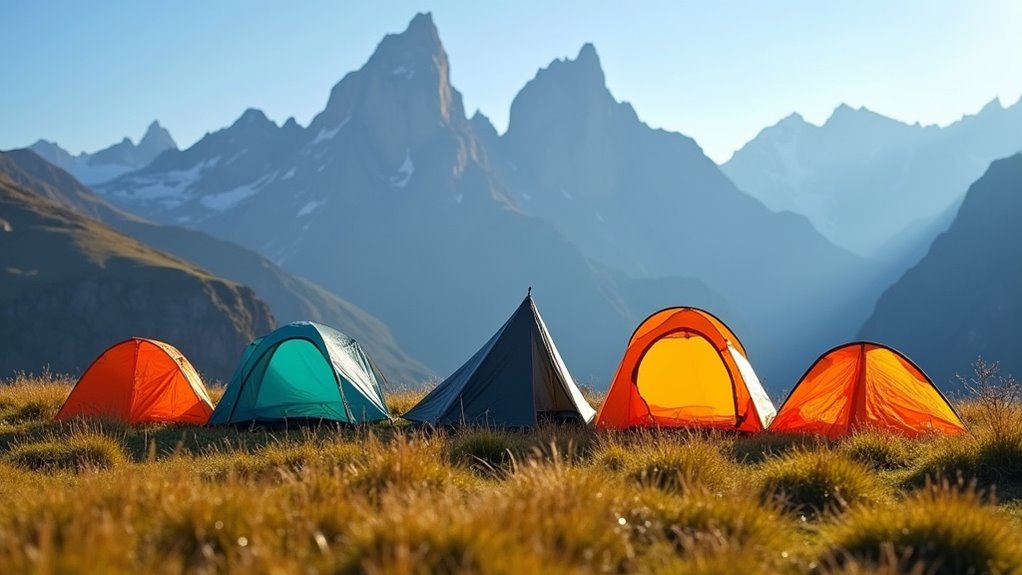
While cabin tents prioritize comfort over portability, backpacking tents flip that equation entirely. You’ll sacrifice some living space for gear that won’t break your back on long hikes. These tents typically weigh between 2-4 pounds and pack down to the size of a sleeping bag.
Look for features like aluminum poles, ripstop nylon fabric, and minimal guy-lines. You don’t need expensive ultralight materials unless you’re hiking serious miles daily. A good backpacking tent under $150 will serve most weekend warriors perfectly.
Consider capacity carefully – a “2-person” backpacking tent feels cozy with two adults. If you value elbow room, size up.
Free-standing designs set up easier on rocky terrain, while non-free-standing tents save weight but require proper staking.
For those planning extended outdoor adventures, bushwalking offers an excellent way to test your gear while exploring Australia’s diverse wilderness areas.
Tunnel tents earn their name from their distinctive curved shape that slices through wind like a blade. You’ll find these tents excel in harsh weather conditions where other designs might struggle or collapse.
These ingenious shelters cut through brutal conditions with their blade-like design, delivering reliable protection when conventional tents simply can’t survive.
Their aerodynamic profile offers several key advantages:
You’ll appreciate tunnel tents when camping in exposed areas like beaches, mountains, or open fields. They’re particularly popular with families since they offer generous space without the premium price of cabin-style tents. When selecting the right shelter for your outdoor adventure, understanding the various types of camping tents available will help you make an informed decision based on your specific needs and environment.
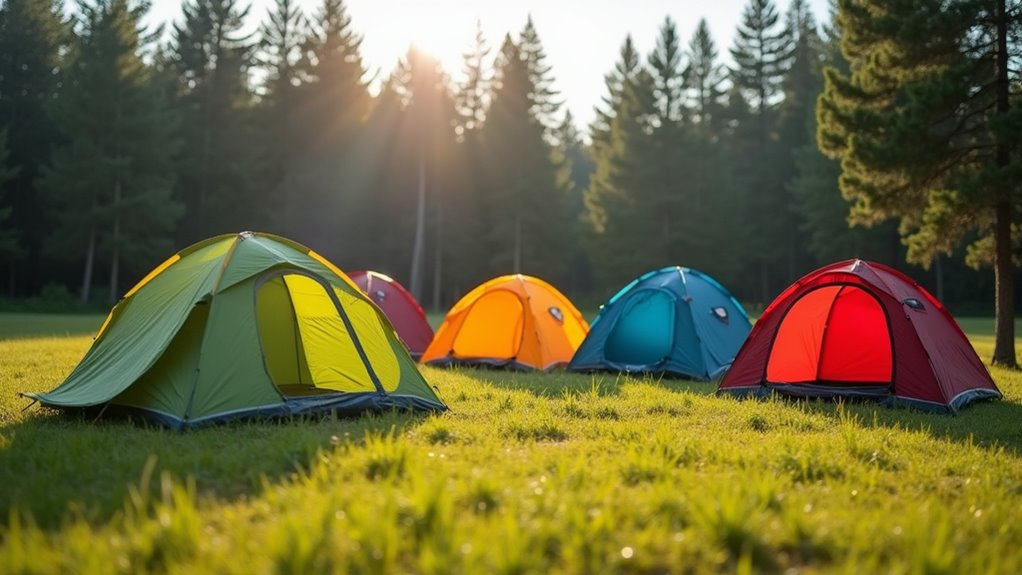
When you’re running late for a camping trip or dealing with sudden weather changes, pop-up tents become your best friend. These spring-loaded shelters literally unfold themselves in seconds – just remove them from their carry bag and watch the magic happen.
You’ll find pop-up tents perfect for festival camping, beach trips, or quick overnight adventures. They’re incredibly lightweight and require zero assembly skills.
However, don’t expect them to handle severe weather conditions like dedicated camping tents do.
The biggest challenge? Folding them back up takes practice and patience.
Budget-wise, they’re affordable starter options, typically costing $30-80. While they won’t replace serious camping gear, pop-up tents excel at convenience camping where speed and simplicity matter most.
When selecting any camping tent, remember that finding the perfect camping tent involves balancing your specific outdoor adventure needs with practical considerations like weather resistance and setup time.
At the opposite end of the camping spectrum from lightweight pop-ups, geodesic tents represent the heavyweight champions of outdoor shelter. You’ll find these dome-shaped fortresses engineered with multiple intersecting poles that distribute wind loads evenly across the structure.
Geodesic tents stand as the ultimate fortress-grade shelters, engineered to conquer the harshest conditions nature can unleash.
When you’re facing harsh mountain weather or extended backcountry expeditions, geodesic tents won’t let you down. They’re built to withstand serious punishment while maintaining interior space efficiency.
Key advantages include:
Expect to pay premium prices, but you’re investing in shelter that’ll handle whatever nature throws at you.
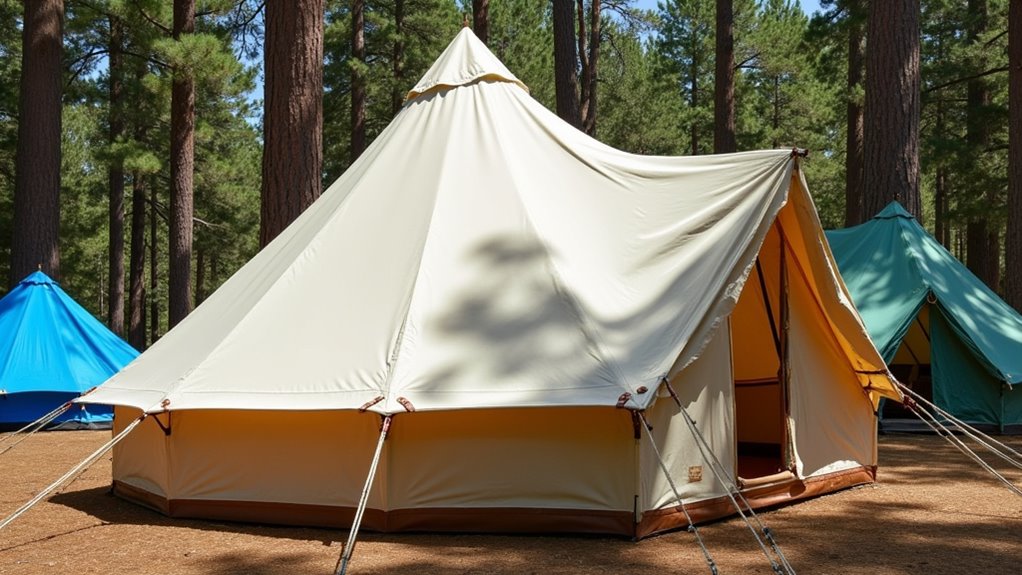
While modern synthetic materials dominate today’s camping market, wall tents bring you back to traditional canvas camping that’s stood the test of time. You’ll find these sturdy shelters perfect for extended stays at hunting camps, family reunions, or base camps where comfort matters more than portability.
Canvas construction gives you superior durability and weather resistance compared to lightweight alternatives. You can stand upright inside thanks to vertical walls and generous headroom.
Most models accommodate wood-burning stoves for heating and cooking, making them ideal for cold-weather camping.
However, you’ll pay more upfront and deal with extra weight. Canvas requires proper drying and maintenance to prevent mold.
If you’re planning long-term outdoor stays where space and comfort outweigh weight concerns, wall tents deliver unmatched livability. Following proper camping safety tips ensures you’ll maximize both comfort and security during your extended outdoor adventures.
Another traditional shelter that’s gained modern popularity, teepee tents offer you a distinctive camping experience with their iconic triangular shape and surprisingly roomy interiors.
You’ll appreciate the practical benefits these tents deliver:
Modern teepee tents use lightweight materials instead of heavy canvas, making them budget-friendly options for car camping.
You’ll find they’re particularly great for group camping since everyone can sit upright inside.
They’re not ideal for backpacking due to size and weight.
The spacious interior also provides ample room for organizing your camping cookware and other essential gear around the tent’s perimeter.
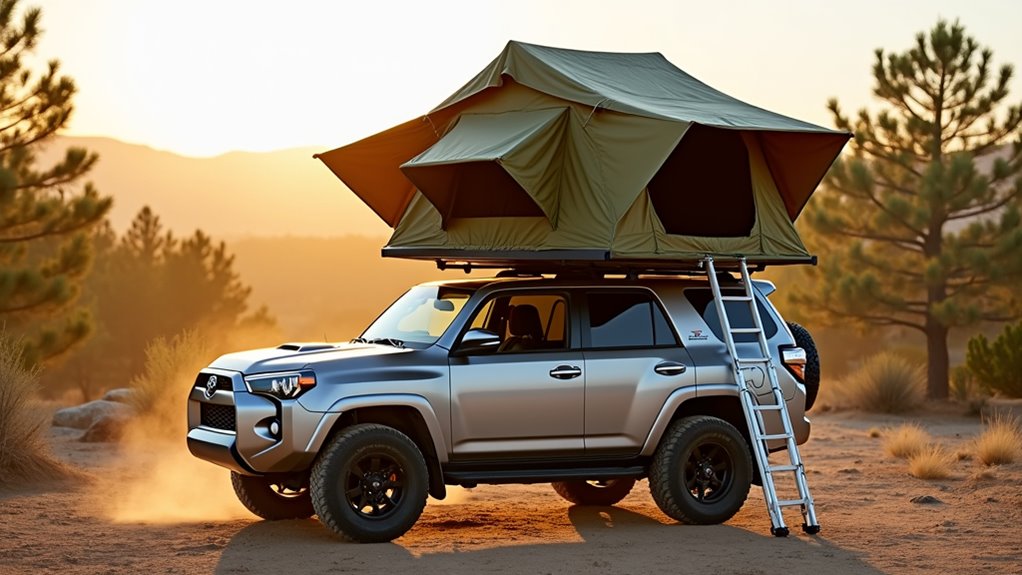
Rooftop tents transform your vehicle into a mobile basecamp, letting you sleep comfortably above ground while exploring remote destinations. You’ll avoid rocky, wet, or uneven terrain that makes ground camping miserable. These tents mount securely to roof racks and typically sleep two to four people.
Hard-shell models pop up quickly but cost more, while soft-shell versions pack smaller and won’t break your budget. You’ll need a sturdy vehicle with proper roof load capacity – check your owner’s manual first. Installation requires basic tools and patience.
Consider weight limits, tent size when closed, and your vehicle’s height clearance. Most rooftop tents include thick mattresses and weather protection. They’re perfect for overlanding trips where you’ll camp in different locations nightly without hauling ground gear. Whether you’re a beginner or experienced camper, following essential camping tips will help ensure a safe and enjoyable rooftop tent experience.
When every ounce counts on backcountry adventures, ultralight tents become your best friend for solo expeditions. These minimalist shelters typically weigh under two pounds, letting you cover more miles without shoulder strain. You’ll sacrifice some luxury, but gain incredible freedom on the trail.
Trade comfort for freedom when every ounce matters on solo backcountry adventures.
Key features that make ultralight tents worth considering:
You’ll pay premium prices ($300-600), but serious backpackers find the weight savings invaluable for multi-day solo adventures. Don’t forget to pack an intelligent water bottle like the Sportline Hydracoach to monitor your hydration levels during these demanding expeditions.
You’ve spent hours researching the perfect tent, comparing weights, sizes, and features. Ironically, after all that planning, you’ll probably end up loving the one you almost didn’t buy – the budget option that seemed too simple. While you’re dreaming of spacious cabin tents, your wallet’s pushing you toward that basic dome tent. Here’s the twist: that “compromise” tent will likely give you the best adventures. Sometimes less really is more.